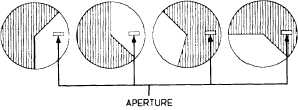Figure 13-1.–Basic components of a motion-picture camera.
Figure 13-2.–Rotary shutter.
shock and prevent the film from breaking (fig.
13-1).
The shutter in most motion-picture cameras is a
focal plane type and is called a rotary disk shutter. A
rotary disk shutter is a disk that has a segment cut out,
causing the shutter to have a light and dark cycle as it
rotates. Exposure is made when the cutout segment of
the shutter passes in front of the film. The film is
advanced during the dark cycle (fig. 13-2).
A motion-picture camera is used to photograph
action in a rapid succession of still pictures on a long
strip of film. Each picture area on a motion-picture film
is called a frame, and the speed that the camera is
operated is called frames per second (fps). The standard
operating speed for 16mm cameras is 24 fps. When the
camera operating speed and the rate of projection are the
same, the action looks normal; therefore, the standard
projection speed is also 24 fps. However, it is possible,
and sometimes desirable, to make motion pictures at a
slower or faster rate than 24 fps. You may do this to
either slow down or speed up the action on the screen.
To portray a subject in slow motion, you operate the
camera at a speed faster than the standard 24 fps, but
keep the projector at the standard speed. To portray a
subject in fast motion, you operate the camera at a speed
slower than 24 fps, and the film is projected at 24 fps.
All changes to the portrayal of normal subject motion
should be done by adjusting the camera speed, not the
movie projector.
Camera speeds in the thousands of frames per
second are used in scientific and experimental research
to measure and observe such things as the fall of liquids,
the speed of objects in flight, and the bursting
characteristics of objects. When films shot at very fast
fps rates are projected at 24 fps, the illusion of subject
motion on the screen is slowed down considerably. At
these speeds the viewer can study details of the subject
matter and obtain research data.
Motion-picture cameras are classified according to
the size (width) of the film they use. The most common
motion-picture film sizes are as follows: 8mm, super 8,
16mm, and 35mm. In the Navy today, motion-picture
film has almost been completely replaced with video
film; however, Hollywood productions still use
motion-picture film as large as 70mm.
Lenses used in motion pictures are basically the
same as lenses for still photography; therefore, the
information on optics presented in chapter 1 also applies
to motion-picture camera lenses. The standard or normal
focal length lens for a 16mm camera is 1 inch (25mm).
Longer or shorter focal length lenses should be
considered as long focal length (telephoto) or
wide-angle lenses, respectively, depending on what size
film is used. A long focal length lens for 16mm film is
38mm or longer. A wide-angle focal length lens for this
camera is 13mm-17mm. Table 13-1 illustrates some
typical camera and lens combinations.
FILTERS
With one exception, the use of filters for motion
pictures is the same as for still photography. The effects
that filters produce on motion-picture film emulsions are
the same as the effects they produce on still
photographic film emulsions. The one exception is the
use of a polarizing filter. Camera panning should be
avoided because variable darkening of the image results.
The information on filters presented in chapter 3 applies
to motion-picture photography as well as still
photography.
13-2



